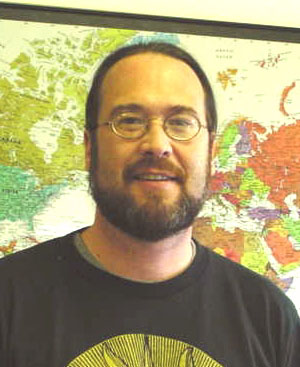When people learn that I am an environmental entrepreneur building a business with mushrooms, it is oft en assumed that it has to do with the commercial-gourmet mushroom industry. That is, of course, after a fleeting notion is entertained about the counterculture variety.
But I use the term “mushroom” loosely in my business. While in the minds of most people, the word mushroom conjures the concept of edibles—the canned button variety commonly found on pizzas, or the various portabellas, chantarelles, and oysters that have become popular on the produce shelves of supermarkets—mushrooms are actually a form of fungi that play an important role in the environment by decomposing organic matter in the soil.
As the study of fungi is known as mycology, the economic use of them is what I refer to as myco-economics. My partners and I formed The Remediators Inc. to develop a market for using fungi to clean up contaminated soils. By enhancing soil conditions and providing adequate biomass, we then can reintroduce naturally occurring organisms to create an environment which rejuvenates the soil and disintegrates chemical compounds. Enhanced growing conditions provide a vigorous colonization of the soil, breaking down toxic elements into beneficial soil components and returning the soil to a healthy state.
In 2000, the U.S. Conference of Mayors reviewed 231 cities and estimated that nearly 21,000 known contaminated brownfields—abandoned or underused industrial or commercial properties where redevelopment is complicated by actual or perceived environmental contamination—are paralyzing more than 81,000 acres of once valued land parcels. If redeveloped to their full potential, the study estimated the cities would realize cumulative gains, in tax revenues alone, of $878 million (U.S. Conference of Mayors 2000). On a national level, a U.S. Senate report from the same year identified more than 45,000 brownfield locations in the entire country (U.S. Senate 2001).
One must also take into account the properties which contain unresolved contamination issues but are not defined as brownfields. In 2001, there were more than 217,000 confirmed toxic release sites listed with various state and federal agencies in the United States. The estimated cost of cleanup is more than $187 billion (Probst and Konisky, et al. 2001). And on a global scale, the commercial need for soil contamination solutions is staggering. In China alone, the market is valued in the hundreds of billions of dollars (Business Week, Aug. 22, 2005).
These numbers point to some questions. Are these properties so toxic that nothing can be done? Are we to believe that these properties are forever lost to the economic market because they are toxic wastelands?
TOXIC FALLACIES AT PLAY
There are two fallacies at play here which seem to be preventing the recapture of market values of contaminated properties.
First is the idea that federal agencies such as the Environmental Protection Agency (EPA) or state agencies want to step in to oversee the cleanup of every contaminated site in the country regardless of cost. Nearly every property owner I have spoken to, including city and county officials, believe this. A quick glance at the Web sites for the EPA and Department of Energy, however, will dispel that notion. In fact, these agencies encourage property owners to remediate their own contamination issues and have set up clear guidelines for doing so under “Voluntary Cleanup Programs (VCP).”1 The process and cost of cleanup are left up to the owner, and emphasis is placed on achieving reduction or elimination of the pollution. Other programs such as Agreement Orders and Decree Orders can be arranged at varying levels of government oversight.
In addition to this misconception about government interference, a second fallacy preventing the restoration of brownfields and other property is the concept of “once contaminated, always contaminated.” Property owners too often assume that once discovered to contain hazardous materials, their land cannot be restored, economically or environmentally, and rarely both, and therefore are willing to write off their investment. They may even assume that their liability for remediation can never be assuaged. The stigma of contamination is a major hurdle to overcome, but an economically important one. In a 2003 report printed by the EPA, stigma of contamination is mentioned as an important consideration in redevelopment: “Once the stigma of contamination is removed, these sites typically become irresistible to purchasers and developers, who quickly return them to use” (U.S. EPA 2003b).
While nuclear contamination may indeed be a consideration for thousands of years, I would hazard to guess that 99.9 percent of contaminated properties in the United States are not contaminated with nuclear waste. The vast majority are impacted by petroleum-based compounds such as diesel fuels, gasoline or lubricating oils, all of which are easily digested by many organisms if given the proper conditions.
THE REMEDIATORS
The Remediators help owners of contaminated properties recapture their investment values. Or, in some cases, we act as a way out of legal liability by purchasing contaminated land, cleaning it up ourselves using bio-remediation, and then reselling it at a profit.
The potential for economic partnerships with public entities is another opportunity we are mining, particularly involving landfills. The EPA lists 1,767 functioning landfills in the United States (U.S. EPA 2003a). One of the most prevalent forms of dealing with petroleum contaminated soil is containment within these landfills. Many municipalities are already closing their landfills due to environmental and economic pressures. In my town of Port Angeles, Washington, the city has recently closed its landfill and contracted to have its entire waste stream hauled to a larger, regional landfill, located more than 300 miles away. Other cities are following suit. Very few municipalities within the Pacific Northwest currently operate their own landfill. Space for municipal waste streams will continue to sell at a premium, as additional space for new landfills moves further and further from urban areas.
Furthermore, the cost of containing and moving petroleum contaminated soil such long distances is more costly than recycling it locally. Our company is positioning itself to take advantage of this economic turning point.
We are working with the City of Port Angeles to establish a pilot scale treatment facility to recycle the small volumes of contaminated soils it handles. It is our hope to establish a working model for recycling petroleum contaminated wastes in other cities as an alternative to concentrating toxic soils into landfills.
Despite facing hurdles such as government regulations, bureaucratic permitting, insurance requirements, legal considerations, and proprietary intellectual property rights, we are confident that fungal remediation is a cost-effective way to recycle contaminated soils. Fortunately for us, the current breezes of government involvement are blowing in our direction as more and more agencies are embracing innovative technologies like ours.
NOTE
1. Since 1995, EPA has encouraged protective cleanup of sites under VCPs by entering into non-binding Memoranda of Agreement (MOAs) with states based on a review of the state VCP. Th e purpose of the MOAs is to foster more effective and efficient working relationships between EPA and individual states regarding the use of their VCPs. Online: www.epa.gov/compliance/cleanup/redevelop/state.html.
REFERENCES
Probst, Katherine N., and David M. Konisky, et al. 2001. Superfund’s Future: What Will It Cost? Congress-commissioned report. Resources For the Future, Washington, DC.
U.S. Conference of Mayors. 2000. Recycling America’s Land: A National Report on Brownfield Redevelopment. Brownï¬elds Task Force, February.
U.S. EPA. 2003a. Municipal Solid Waste in the United States: 2003 Facts and Figures. October. Online: www.epa.gov/msw/msw99.htm (cited Oct. 12, 2006).
U.S. EPA. 2003b. Removing the Stigma of Contamination and Repairing Blighted Areas: No Cleanup Required. EPA 500-F-03-010. May.
Online: www.epa.gov/swerosps/bf/success/nocleanup.pdf#search=%22EPA%20500-F-03-010%22 (cited Oct. 12, 2006).
U.S. Senate. 2001. Committee Report 2 of 50-Senate Report 107-002-Brownï¬elds revitalization and environmental restoration act of 2001 to accompany S. 350. 107th Congress, 1st sess.
Visit http://www.theremediators.com/ for more information.




